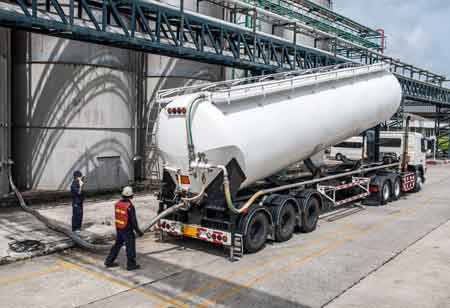Chemical firms consult a freight broker about their evolving demands for chemical transportation rather than dealing directly with HAZMAT carriers.
Each long-distance shipment of hazardous goods has hazards when it comes to chemical transportation. It's essential to be aware of the regulations for transferring potentially hazardous materials for both legal and safety concerns. The crucial information you should be aware of, as well as the recommended procedures for chemical transport, are outlined here:
What Sets Hazardous Chemicals Different From Non-Hazardous Chemicals?
Chemicals are classified as hazardous or non-hazardous depending in large part on the damage they may inflict if exposed to people, animals, or the environment. Hazardous chemicals are unstable, caustic, water-reactive, flammable, explosive, and contain carcinogens and poisons. Non-hazardous chemicals are those that have no negative effects on human health.
How to Transport Hazardous Substances
All hazardous substances (HAZMAT) must always be safely contained, loaded, transported, and unloaded when shipped. Each transporter of chemicals must keep up proper CDL and HAZMAT license maintenance. All businesses must also clearly describe the risks and rules of the HAZMAT chemical.
"While unavoidable delays cannot be prevented, the chemical transportation strategy should account for those that may be anticipated (like bad weather)"
Also, when shipping any hazardous materials, Safety Data Sheets are necessary. The broker (if applicable), carrier, driver, and receiver have access to all the information they want concerning the HAZMAT product being carried, thanks to the 16 parts of the Safety Data Sheet. This covers everything from first assistance to firefighting and preventative measures for accidental discharge. Everybody who comes into touch with the substance should know how to manage it correctly from beginning to end.
Effect of Freight Brokering on Chemical Shipping
Essentially acting as a middleman in the shipment of chemicals, freight brokers. Chemical firms consult a freight broker about their evolving demands for chemical transportation rather than dealing directly with HAZMAT carriers.
When a chemical company needs a shipment, freight brokers can use their network of chemical transportation firms. The broker has previously checked to see if the HAZMAT transporters have the necessary insurance, safety protocols, and property permits. Using a broker can maintain shipping prices constant for tasks of the same size. Also, it does away with the necessity to investigate HAZMAT transportation firms and other carriers. The freight broker charges a small fee for using their network, but doing so can assist in ensuring that the chemical shipment procedure goes without a hitch.
Guidelines for Chemical Transportation
When it relates to chemical transportation, it's crucial to start with all the pertinent details regarding the substance being sent. Giving a HAZMAT transporter ambiguous information will lead to an incorrect quotation. The quote's price might increase by a factor of two or even three as more comprehensive information is given.
Every carrier must also undergo a thorough investigation. The responsibility for checking that a transportation carrier is appropriately licensed and insured may rest with the chemical business or shipper. Before any chemical is distributed, the appropriate packaging and labeling must be present. In the United States, using improper labels is a federal violation that carries a 75,000 dollars fine as well as possible imprisonment or prison term.
Avoidable Chemical Transport Errors
Errors can occur even when the best procedures are followed. The most frequent one is failing to plan for supply chain disruptions. In the event that HAZMAT transportation is impacted by severe weather, this may result in arrival delays or even the need to dispose of time-sensitive chemicals. While unavoidable delays cannot be prevented, the chemical transportation strategy should account for those that may be anticipated (like bad weather).
Another error that is frequently made is not thoroughly screening a new carrier. Chemical businesses often race to locate the first carrier to deliver the load if the carrier meant to transport the chemicals cancels. This may be an expensive oversight. To carry any chemicals, a carrier needs to get a Hazardous Materials Safety Permit (HMSP). The chemical firm or shipper of record will be responsible if the appropriate carrier cannot be found. At all costs, avoid doing this.

